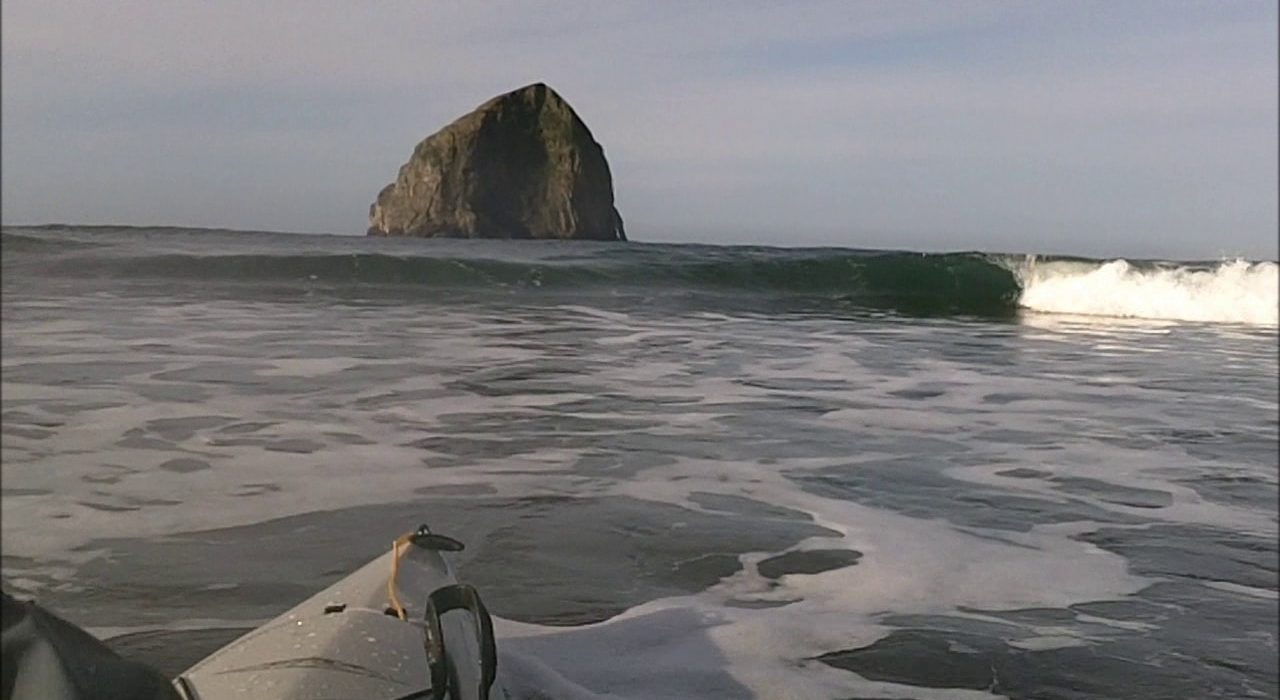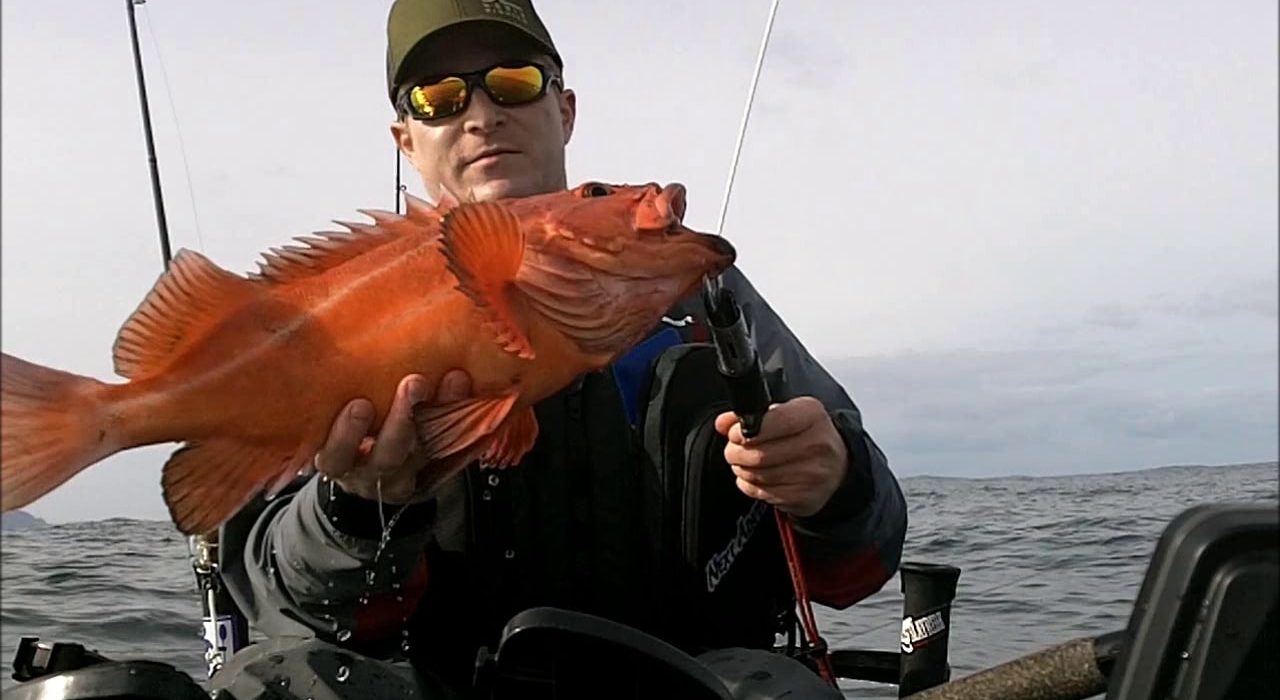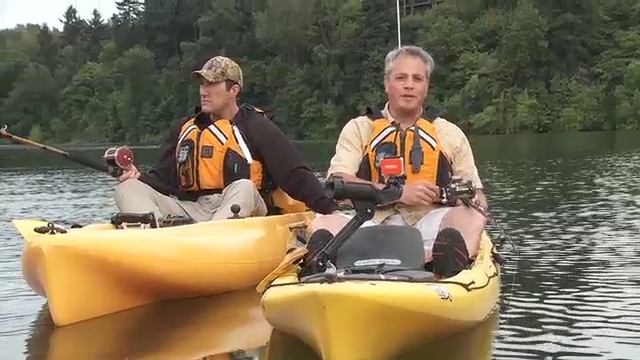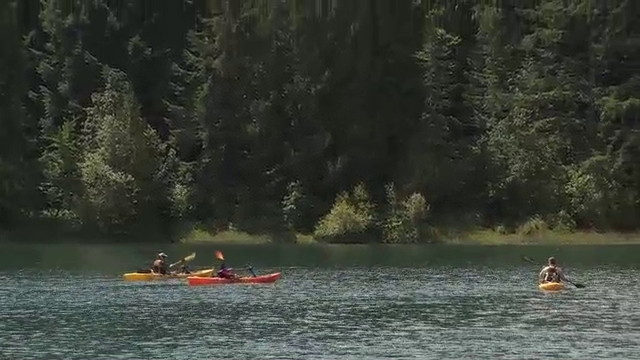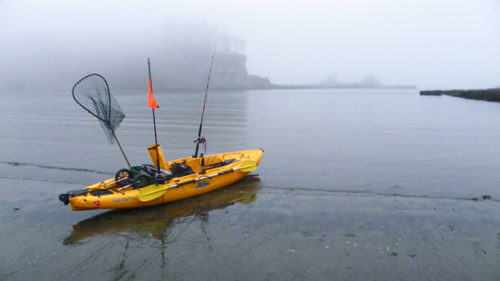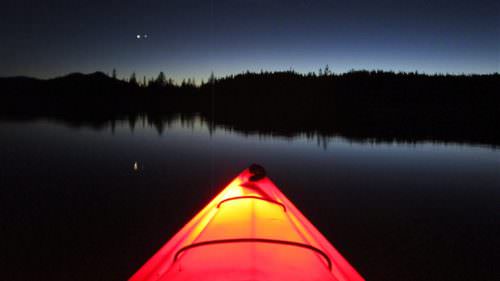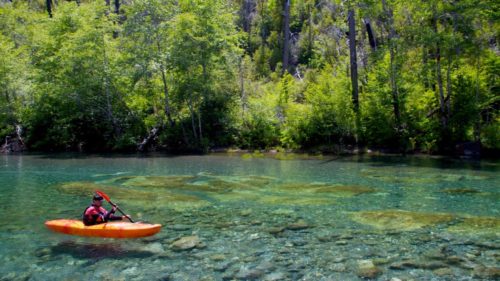What happens when you combine the joys of kayaking with the thrills of fishing? You get an innovative way to enjoy outdoor recreation, one that will leave you satisfied whether or not you catch the big one.
You’d never call Mark Veary’s fishing boat a “heavyweight” — it weighs a mere 50 pounds. Yet Veary and his fishing partner, Brian Steves, agree that their kayaks have opened up Oregon’s waterways for exploration like never before, including to popular places like Henry Hagg Lake near Portland.
“There was always a spot ‘somewhere over there’ that I wanted to get to,” says Veary. “Then I saw one of these on the water and that was it! It looked so easy and so mobile and I knew I had to have one.” He bought his first kayak over 10 years ago and has been exploring Oregon’s waterways ever since. Now both Veary and Steves are members of Northwest Kayak Anglers.
The watercrafts are affordable, easy to operate and a good fit for all members of the family. Whether backwater sloughs, ponds, lakes or the big blue Pacific Ocean, these compact, smooth-sided fishing kayaks have allowed more anglers to paddle into more places and catch more species of fish.
Modern fishing kayaks have seats molded into their design so anglers can sit on top of the craft rather than inside, and there’s plenty of open space that allows for storage of equipment, fishing tackle and gear.
Coastal kayak fisherman Jeff Anderson was drawn to the sport and noted that that biggest adjustment is the need for detailed pre-planning and on-board organization, especially when it comes to water safety: “Safety is much, much more apparent in these small boats. You are right on the water, so even though the boats are extremely stable, you do expect to go swimming at some point. Plus, I fish year-round, so during the colder months I wear fleece underneath my dry suit.”
Everything has a place on Anderson’s boat; all of his equipment is within easy reach, and he even tethers his fishing rods to the boat in case they go overboard. All these precautions create the recipe for an enjoyable kayak fishing trip in the Pacific Ocean near Pacific City’s iconic Haystack Rock.
Anderson says, “Kayaks really put a lot more adventure into fishing. You are right on the water’s surface and it’s this ‘old man and the sea’ kind of feeling that lifts the spirit.”
Veary carries a handheld VHF radio for communication and notes that anglers must have a signaling device with them – like a whistle – at all times. In addition, his boat is checked annually to be certified clean of invasive species and he always wears his life vest. “The most important thing is to be aware of your surroundings because there are many power boats out in the summer months and all it takes is a momentary lapse of judgment and you are over the side of your kayak.” Veary is a big believer in ‘being seen’ on the water, so his boat sports a six-foot-tall mast with a red safety flag attached, just as cyclists install on their bikes.
He’s also a big proponent of kayak fishing and wants others to share his passion: “Fishing is such an intimate experience aboard the kayak … and I think that makes catching a fish more enjoyable. Plus, you don’t have a big outboard motor in the back of the boat. You did it under your own paddling power.”
